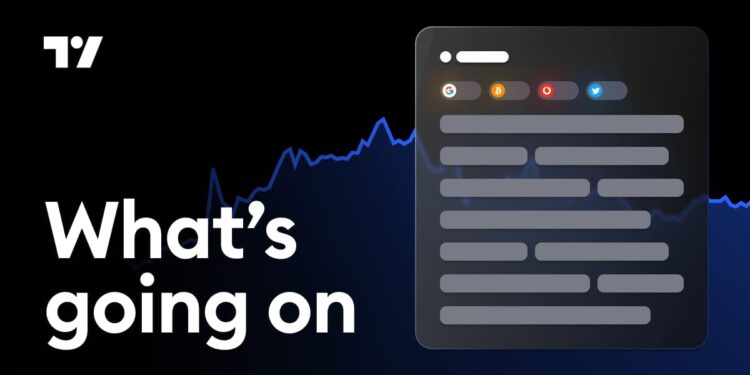In the latest episode of The Bitcoin Layer, host Nik Bhatia invited on-chain analyst James Check—better known as “Checkmate”—to dissect the forces that have carried bitcoin past six figures and to explain why he believes the market still points toward a move to roughly $150,000.
From the outset, Check framed his analysis in sweeping macroeconomic terms. Since the 2008 financial crisis, he said, dollar strength has been “a big up-trend” that rewarded foreign investors who benchmark in other currencies, buy dollars, and place those dollars into US equities. But that era, he argued, is giving way to a “sound-money dominance regime”:
“My favorite chart is the S&P 500 priced in gold. You get about ten years where equities trounce gold, then ten years where gold trounces equities. Since 2022 that chart flipped in gold’s favor, and for the first time in history we have a mature, trillion-dollar bitcoin sitting right alongside it. We’re watching the rules shift, and it’s not going to happen overnight—it’ll take a decade, maybe longer, to fully play out.”
Why $150,000 Is Next For Bitcoin
The conversation quickly moved from macro currents to market structure. After the spring sell-off that drove prices from the mid-$90,000s to the mid-$70,000s—an “air pocket” where little historical supply had transacted—bitcoin clawed back the dense supply cluster around $95,000 with surprising ease.
“People were willing to just sit tight and allow the market to find its level. They’d bought at $100,000, watched it fall to $75,000, bought some more, and now they’re up on the whole stack. That kind of behavior is a real boost of confidence.”
Shortly after that consolidation, the market printed a local high near $105,000. For veteran participants, the psychological shift was palpable. “$100,000 was the target for the last decade,” Check said. “Now it’s the floor. Bitcoin has proved it belongs at a trillion-dollar market cap, flipped silver, and feels perfectly natural sitting among the five largest monetary assets on earth.”
Check’s quantitative framework hinges on the market-value-to-realized-value (MVRV) ratio, which benchmarks price against the aggregated on-chain cost basis. Translating historical MVRV extremes into forward levels puts the present cycle’s statistical ceiling near $166,000: “If price goes to $166,000, my objective analyst self has to say, ‘We’re two standard deviations above the mean, and we’ve only stayed higher than this five percent of the time.’”
That band—roughly $150,000 to $160,000—marks the altitude where he expects the first serious wave of profit-taking. Yet the level remains plausible precisely because it is rooted in realized behavior, not in the supply-halving calendar: “There’s a reason MVRV only gets so high. When people look at their portfolio and see a house sitting there in green numbers, a chunk of them will hit the sell button. You don’t need everyone to sell—just enough to overwhelm new demand.”
Derivatives, “Time Pain” And The Halving
A maturing derivatives market is central to Check’s thesis. He expects perpetual-swap funding rates to breach 20 percent annualized on a rapid run toward $150,000, inviting basis traders to short futures and collect the premium. Options desks, meanwhile, can harvest fat volatility premia by selling calls.
“Big asset managers must hedge. If they can’t lay off a billion-dollar position in options they won’t take the position in the first place. Derivatives aren’t papering over demand—they’re the plumbing that lets real capital scale into the asset.”
Those instruments also reshape corrections. Where 2017 pullbacks were 40% plunges that reversed in days, today’s market prefers shallower, longer consolidations—episodes that impose what Check calls time pain. “Depth pain is easy to see—your coins are 30% underwater. Time pain is harder. Three months of chop at the same level will wear investors out, and boredom is a powerful seller.”
Perhaps one of the most striking element of the interview was Check’s deliberate break from the four-year, halving-centric cycle model. After studying the August–September 2023 pullback, the mid-2024 range, and the latest sell-off, he concluded that the short-term-holder cost basis now functions less as a binary floor or ceiling and more as a mean-reversion anchor.
“People are now using bitcoin to respond to the world rather than us responding to bitcoin. Macro sentiment—not scheduled supply shocks—is steering the big flows.” Treasury Adoption And The Confidence Machine
When tracking corporate treasuries, ETFs, and other large holders, Check zooms out to a 30-day change in realized cap—the cleanest view of net dollar inflows. Even March-April ETF outflows, he noted, were nearly matched by falling CME open interest, implying “mechanical cash-and-carry unwinds rather than lost conviction.”
Closing the conversation, he returned to first principles: “Markets are a big confidence machine. The dollar cycle, the gold-equity rotation, the cost of hedging—all of that feeds straight into bitcoin order books, option smiles, and on-chain ledgers. The only real question is: what’s the fair macro premium for digital sound money?” For James Check, the chart already sketches an answer: somewhere around $150,000, the confidence machine will stage its next major test.
At press time, BTC traded at $102,573.















